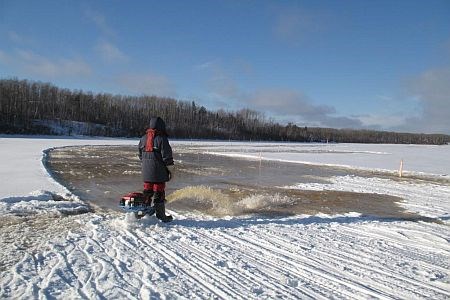Patience and perseverance has paid off for Australian junior miner Magma Metals.
The Perth-headquartered company has turned a neglected area north of Thunder Bay into a platinum group metals hot spot in a few short years.
"We’re a low-key company," said Magma’s Thunder Bay exploration manager Allan MacTavish. "Nobody really knew about us over a year ago."
But people always wondered what the Western Australian company was doing with a high-grade platinum-palladium play at its Thunder Bay North project, 45 kilometres north of the city.
The company is in the midst of advanced exploration at its flagship Thunder Bay North platinum project with a 50,000-metre program to convert their initial resource of 690,000 ounces of platinum equivalent initial resource into an indicated category.
The discovery was first identified by geologist Graham Wilson who found high grade PGM values in boulders along the shore of Current Lake.
When Magma CEO Keith Watkins formed the company in 2005, he came to Canada looking for platinum-palladium, copper, nickel properties. Wilson, who held the Thunder Bay North property, took him to Current Lake.
Wilson, who has a PhD in geology, had found some peridotite boulders on the lake shore which didn’t look like they held any mineralization until he hacked off a piece. The sample had an assay value of seven grams of platinum-palladium.
"Graham was the one who discovered the boulders which led to Magma optioning it."
It was MacTavish who accepted the Bernie Schnieders Memorial Award for Magma Metals as the Discovery of the Year at last spring’s Northwestern Ontario Mines and Mineral Symposium in Thunder Bay.
The award never produced an investors bounce since the company only traded on the Australian stock exchange until they finally listed on the TSX in November under the symbol ‘MMW.’
Magma CEO Watkins said the TSX listing marked an important step in the company’s development giving them "direct exposure to the world’s deepest capital market for resource companies."
The company has six gold, nickel, copper, zinc and PGM properties in Western Australian.
Last May, Magma raised $16 million in Australian dollars for exploration with a good chunk earmarked to be spent at Thunder Bay North, easily the company’s most advanced project.
"We don’t mine anything yet but we expect to be a mining company," said MacTavish.
The area the company is working is basically virgin territory with no history of gold or base metal mineralization and only a few scattered exploratory drill holes.
"It had been discounted," said MacTavish. "Magma came in and started looking for conduit massive sulphides which has the potential to be huge and they lucked out. There’s a lot of science involved but there’s also an element of luck."
The company persevered through a frustrating period after its initial ‘Discovery’ drill hole in December 2006, then hit a drought on the next 25 until No. 27 hit good grades again.
It was a chore to figure out the complex geology of the ore body they were drilling which runs under Current Lake and pops up on the other side in their Beaver Lake zone, which opens into a bigger body.
This winter’s work at Thunder Bay North will be spent mostly on infill drilling with two rigs on its Bridge Zone and Beaver Lake areas within their Current Lake Intrusive Complex.
The company has a half-dozen exploration projects within 20 kilometres radius of Thunder Bay North. North American Palladium’s Lac des Iles Mine lies just to the north.
MacTavish said the company was "thinking ahead and thinking environmentally" when it began its baseline environmental work two years and 20 drill holes ago.
The company is expected to shortly announce a scoping study scheduled to be complete by the second quarter of 2010. Part of that study will explore options to partially drain Current Lake but have as little environmental impact as possible.
Other "reconnaissance" exploration is taking place with a drill turning at their Steepledge Lake property three kilometres to the west, and at their Lone Island Lake complex, five kilometres beyond.
"We have an interconnected complex of ultramafic intrusive rocks with platinum-palladium, copper-nickel potential."
Despite the recession, the company never really slowed exploration, it just became more smarter with its money, he said.
Should Thunder Bay North develop into a mine, infrastructure doesn’t appear to be a problem since the site is road-accessible and only 15 kilometres from Highway 527 and about 17 kilometres from power lines and a railway.
MacTavish said being only one hour’s drive from Thunder Bay is a great advantage. All of their staging and supplies are done out of the city as well as hiring their drillers and camp cooks.
"We try to make sure Thunder Bay is getting the benefit of our exploration. I try to get the word out that we’re locally based with our exploration office and we tend to hire locally."
Magma Metals was one of five junior miners showcased in September by the Thunder Bay CIM chapter at a mineral investment symposium.
MacTavish said, the exploration front in northwestern Ontario hasn't been hit as hard as other places. He attributes that to a solid group of companies like Premier Gold, Sabina Resources and Benton Resources with good projects who always able to raise funds in tough times.
"We didn’t curl up in a corner, we just retrenched a bit, spent money wisely and kept going."
www.magmametals.com.au




